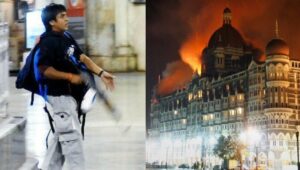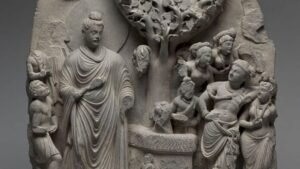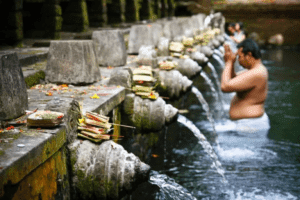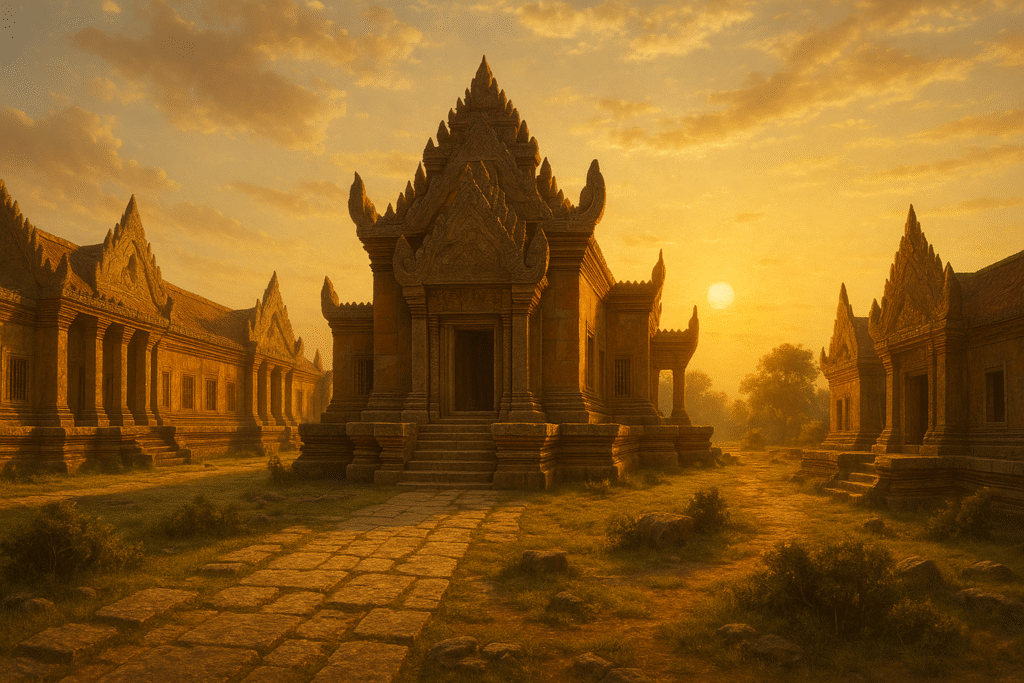
Located atop the Dângrêk Mountains on the Cambodia-Thailand border, Preah Vihear Temple is an architecturally significant and politically contentious site in Southeast Asia. Constructed as a Hindu temple dedicated to Shiva, it represents an important achievement of the Khmer Empire and continues to play a central role in regional politics and cultural identity.
Origins and Early Construction (9th – 10th Century)
The site of Preah Vihear Temple was initially selected for its elevated and strategic location. The mountain itself held religious significance as it was associated with Mount Meru, a sacred mountain in Hindu cosmology. This conceptual linkage made it an appropriate site for a Shaivite sanctuary.
Construction began in the early 9th century CE during the reign of King Yasovarman I (r. 889–910), a monarch known for his patronage of Hindu temples and hermitages. While earlier wooden structures may have existed, Yasovarman I likely initiated the transformation of the site into a stone temple complex. This marked the beginning of a long period of architectural development, reflecting the spiritual and political priorities of the Khmer state.
Expansion During the Height of the Khmer Empire (10th – 12th Century)
Successive Khmer rulers, notably Suryavarman I (r. 1006–1050) and Suryavarman II (r. 1113–1149), played critical roles in expanding and enhancing the temple complex. Under Suryavarman I, Preah Vihear was granted significant religious and economic status. Inscriptions from his reign refer to endowments, land grants, and a community of resident Brahmin scholars and priests.
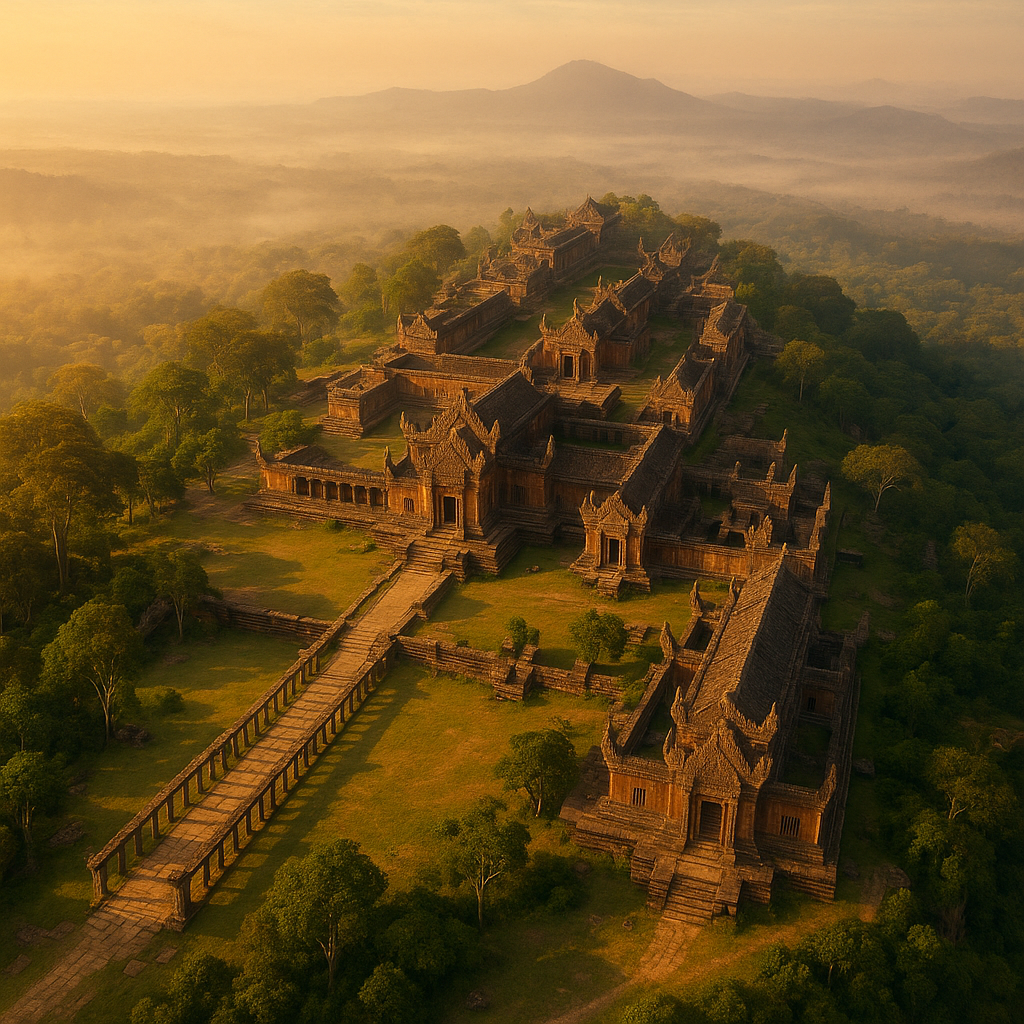
During this period, the temple’s structure evolved into a linear arrangement extending along a north-south axis, built to follow the natural slope of the terrain. This architectural format deviated from the more common concentric layouts seen in Angkor, emphasizing instead the physical and symbolic ascent toward the sanctuary. The temple complex featured five main gopuras (gateways), successive courtyards, processional paths, libraries, and the central sanctuary, which housed the linga of Shiva.
Suryavarman II, builder of Angkor Wat, continued this expansion by commissioning additional architectural features and enhancements to the sanctuary. By the 12th century, Preah Vihear had become both a religious and administrative center on the empire’s northern frontier. Stone inscriptions discovered at the site record the presence of a garrison and a functioning temple economy supported by regional taxation and agricultural production.
Architecturally, the temple exhibits fine sandstone carvings, including depictions of mythological scenes from the Ramayana and Mahabharata, floral motifs, and images of deities. The stonework reflects multiple phases of construction, which include Bakheng, Koh Ker, and Baphuon styles, showing a clear evolution of Khmer artistic expression.
Post-Khmer Period and Decline (13th – 19th Century)
Following the decline of the Khmer Empire in the 13th and 14th centuries, Preah Vihear’s prominence diminished. The spread of Theravāda Buddhism across the region, combined with political instability and changes in royal patronage, led to the gradual abandonment of Hindu temples. Despite this decline, Preah Vihear continued to serve local spiritual and cultural functions.

Over the centuries, the site was largely untouched due to its remote location. It escaped much of the looting and repurposing that affected other Khmer monuments. European explorers and French colonial surveyors rediscovered the temple in the 19th century, during a period when both Siam (Thailand) and French Indochina (Cambodia) were asserting territorial claims in the region.
Colonial Cartography and the ICJ Ruling (20th Century)
In 1904, Siam and France signed a treaty stating that the border would follow the natural watershed of the Dângrêk Mountains. However, a French survey team in 1907 produced a map that placed Preah Vihear on the Cambodian side of the border. The map was accepted by Siamese authorities at the time.
After Cambodia gained independence from France in 1953, Thailand occupied the temple, citing the watershed principle. In response, Cambodia brought the dispute to the International Court of Justice (ICJ) in 1959. The ICJ, in a landmark 1962 ruling, concluded that Cambodia held sovereignty over Preah Vihear, based on Thailand’s prior acceptance of the map and decades of acquiescence. The ruling was passed by a vote of 9 to 3.
While Thailand initially resisted, it eventually withdrew its forces. The decision remains a focal point in Thai-Cambodian relations and has been subject to renewed scrutiny in later decades.
Modern Conflict and UNESCO Recognition (21st Century)
In 2008, Cambodia successfully petitioned for UNESCO World Heritage status for Preah Vihear Temple. Thailand objected, arguing that the designation affected the ongoing territorial dispute over an adjacent 4.6-square-kilometer area.
The period between 2008 and 2011 saw several military confrontations along the border, with exchanges of gunfire, casualties, and structural damage to the temple. The confrontations were often influenced by domestic political issues in both nations and sparked nationalist sentiment.
In 2011, the ICJ issued a provisional order for both countries to withdraw troops from the temple area and allow UNESCO observers. In 2013, the court clarified its 1962 decision, stating that Cambodia also had sovereignty over the surrounding promontory. This reaffirmed Cambodia’s administrative control over the temple and its immediate environment.
Cultural and Political Legacy
Preah Vihear remains a potent symbol of Cambodian national identity. It appears on the national currency and is integrated into educational narratives as a source of pride. Despite periods of conflict, the site attracts both domestic and international visitors, though access can be affected by political tensions.
From an architectural standpoint, the temple continues to be studied for its unique adaptation to mountainous terrain, its linear progression of sanctuaries, and the chronological layering of Khmer art and religious practice.

Preah Vihear Temple is a monument of substantial historical, architectural, and political importance. Originally constructed as a Shaivite sanctuary by the Khmer Empire, it evolved into a site of regional geopolitical relevance. Its history reflects broader themes in Southeast Asian history, including empire-building, religious transformation, colonial intervention, and modern nation-state conflict. The temple’s endurance as a symbol of heritage and sovereignty ensures its ongoing relevance in both scholarly and political discourse.

